
The following article by David Strange was originally published on 7 Aug 2016.
In northern Bullitt County, Kentucky, there is an area in which it seems all things are named "Hebron." There is Hebron Lane; there is also Hebron Presbyterian Church, Hebron Lane Church of Christ, Hebron Middle School, Hebron Cemetery, the Hebron Building, and even the relatively recent city of Hebron Estates. But there was never an actual community or town of Hebron.
You might naturally think that the road came first. It is a common misconception that early roads and communities were planned, but most places simply evolved over time and by convenience. A lot of roads, such as Hebron Lane, gradually earned their names from whatever landmark was along the way, or for something the road led to.
In the case of Hebron Lane, it was Hebron Presbyterian Church. The historic old church building first opened on March 28, 1858, and that original structure is still in use today, faithfully maintained by its members. Organizing-members first met at what was known as the "old brick schoolhouse" for two years before erecting the church building on land next to the schoolhouse that was donated by Miss Mary Wilson. Construction was begun and supervised by R. K. Summers. Brick for the building was made onsite.
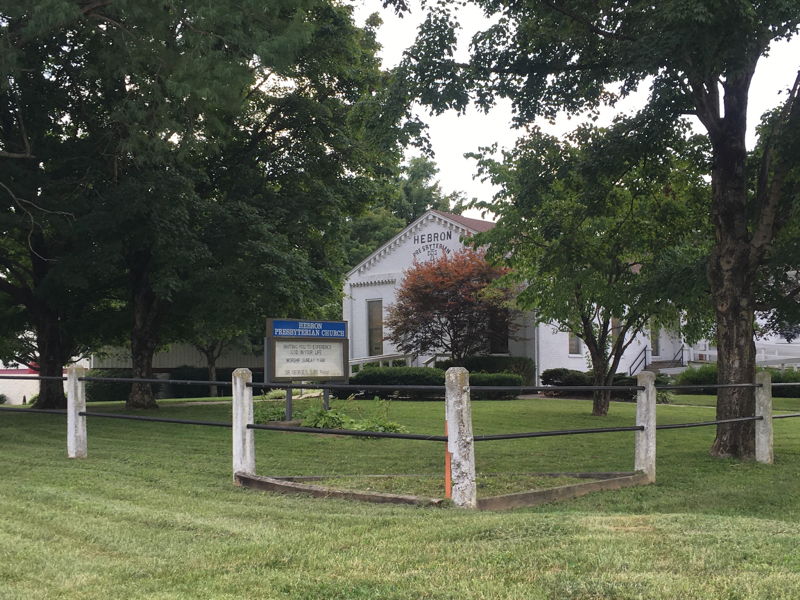
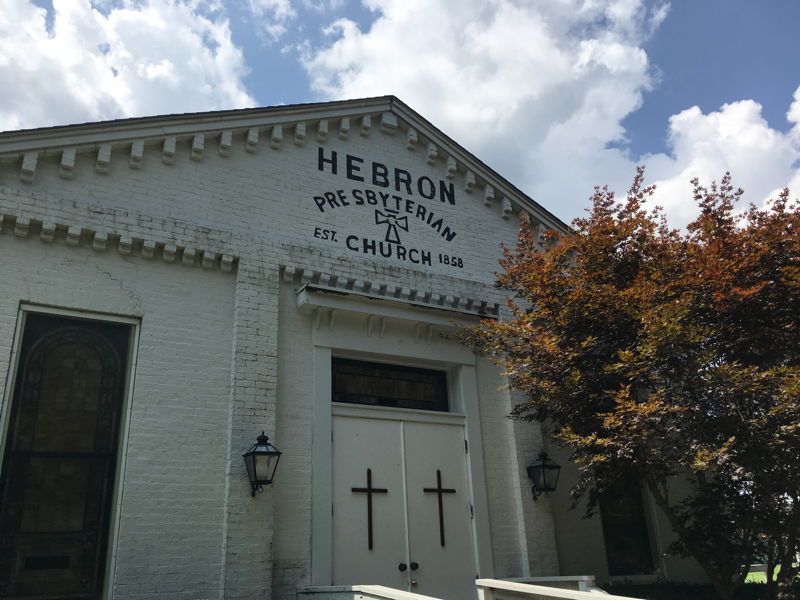
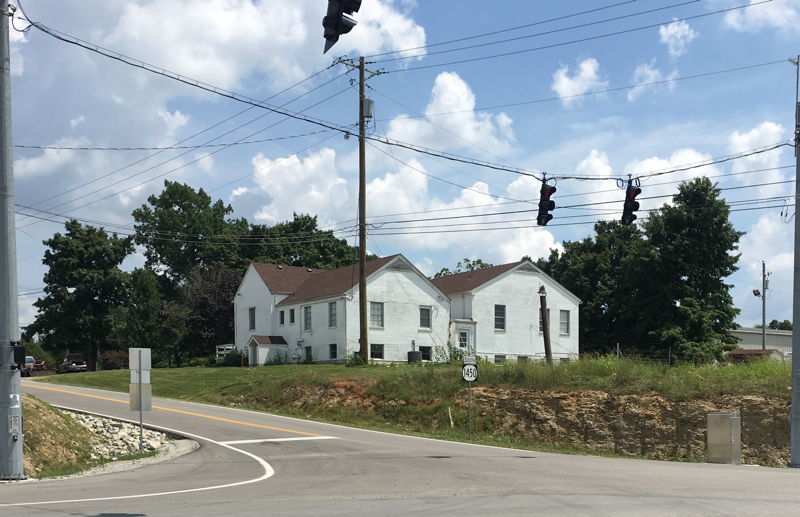
And here's the key part for this story: The name of "Hebron" Presbyterian Church was named after the Hebron mentioned in the Old Testament Bible (Books of Genesis and Numbers) where Abraham, Isaac, and Jacob dwelt and where Abraham and his wife Sarah were buried. The new church also liked that the word "Hebron" means society, friendship, and union.
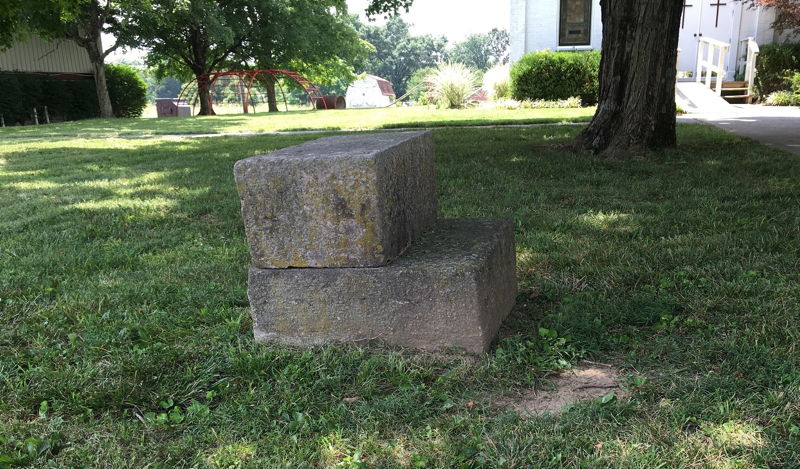
When Civil War hostilities broke out in the area in 1862, the fledgling little church had to suspend night services "due to the condition of the country, excited by the alarm of war and the absence of large numbers of young men from the community." But the church doors only closed to worship once, due to an influenza epidemic in 1918 when all public buildings had to be closed. Even then, according to church history, some members came and worshiped on the front steps. The building was first painted its characteristic white in 1905. The unusual concrete and pipe fence was built in 1910. Electricity replaced kerosene lamps in 1927. In 1938, the church's beautiful stained glass windows were added. To this day, the landmark stone horse-steps (once used by ladies to more properly climb up on horses or carriages) remain on the front lawn.
So that was the beginning of "Hebron" in Bullitt County. In such a rural area the little road that led past the church became known as Hebron Lane. The road was not much more than a dirt wagon trail until it was rebuilt for auto traffic in the 1930's.
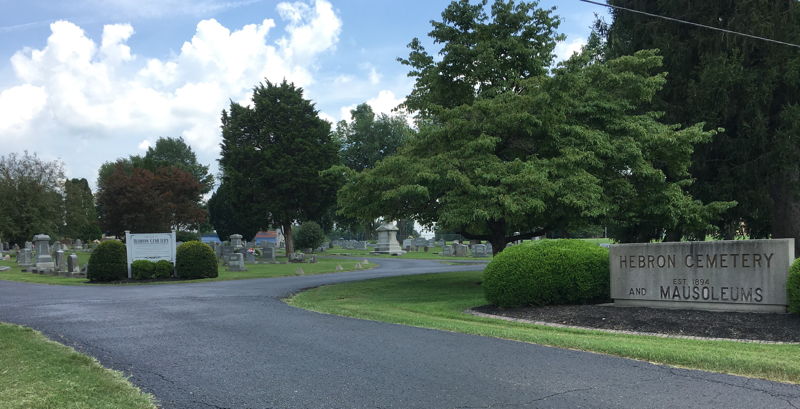
Hebron Cemetery was developed in 1894, across Preston Highway from the church. Many people incorrectly assume that the cemetery is part of the church, but it has never been so. The venerable old cemetery, which is the resting place for a virtual Who's Who of Bullitt County history, was developed commercially in response to the need, even back then, for an alternative to the hundreds of neglected little family cemeteries in the county. It replaced what is now known as "The Pioneer Graveyard" in Shepherdsville. In addition to the expected leaders and officials, Gardner McKay, a famous TV (Adventures in Paradise) and movie star of the 1960's, is also buried there.
Many people still remember the old Hebron Schoolhouse, and some still talk of when they attended the little frame school. There had actually been three school buildings on that site. First was "the old brick schoolhouse" mentioned earlier that predated the church by 25 years. But the school was not known as "Hebron Schoolhouse" until after the church was built. That school was the brainchild of Revolutionary War soldier and pioneer-leader John Beckwith, who is buried at Hebron Cemetery, having been moved there from the old Brooks Cemetery that was once located where Jewish Medical Center South is today. The "old brick school house" was replaced by a white frame building, and then another over time. Today, a small shopping center, "The Hebron Building" sits where the frame school once sat.
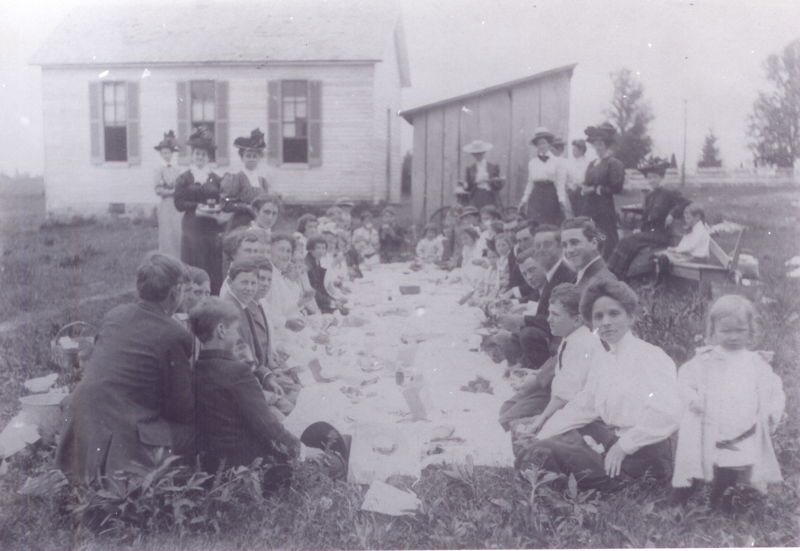
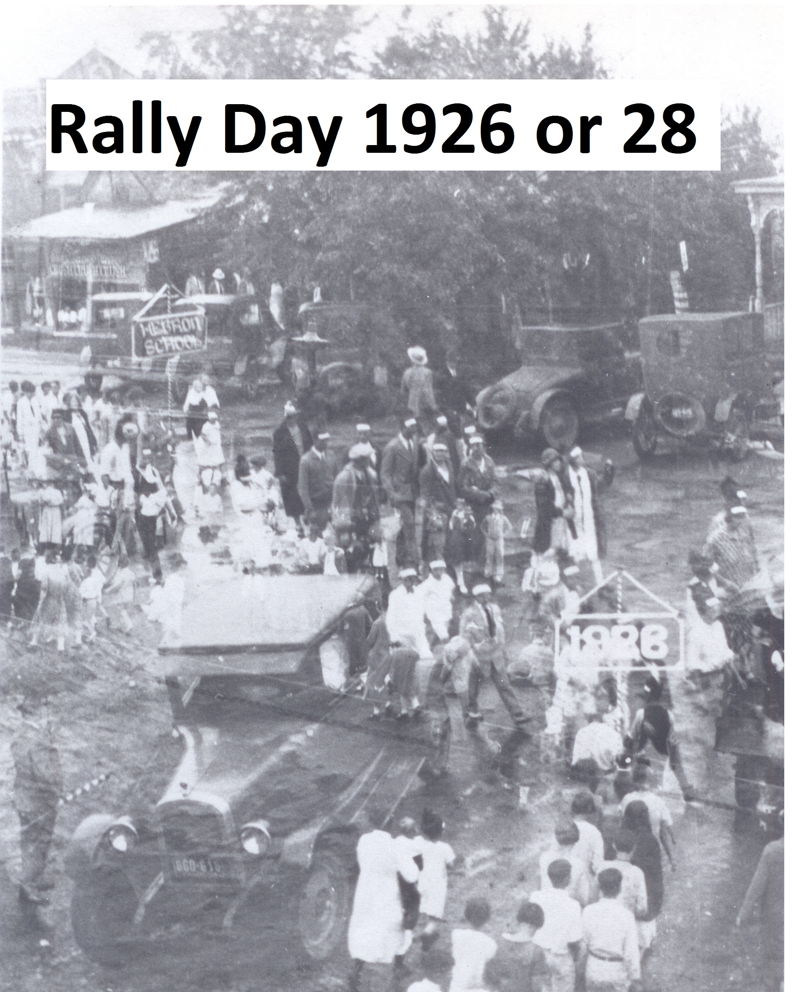
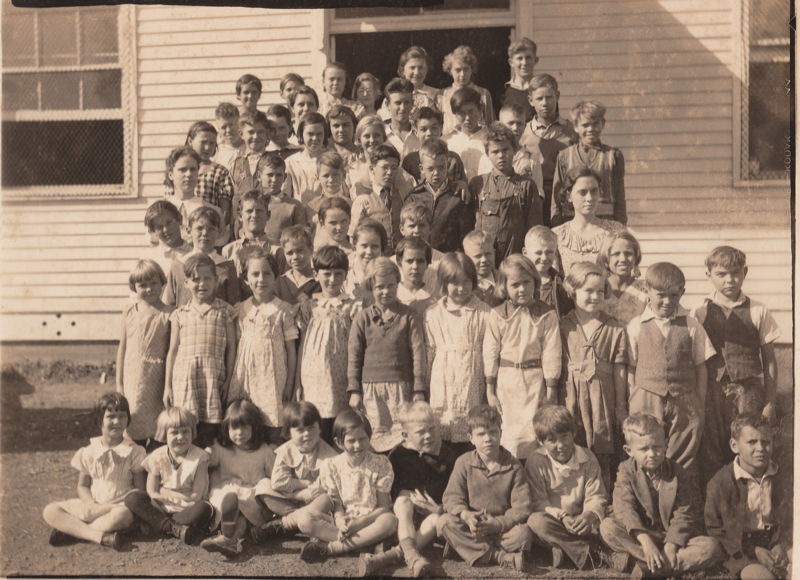
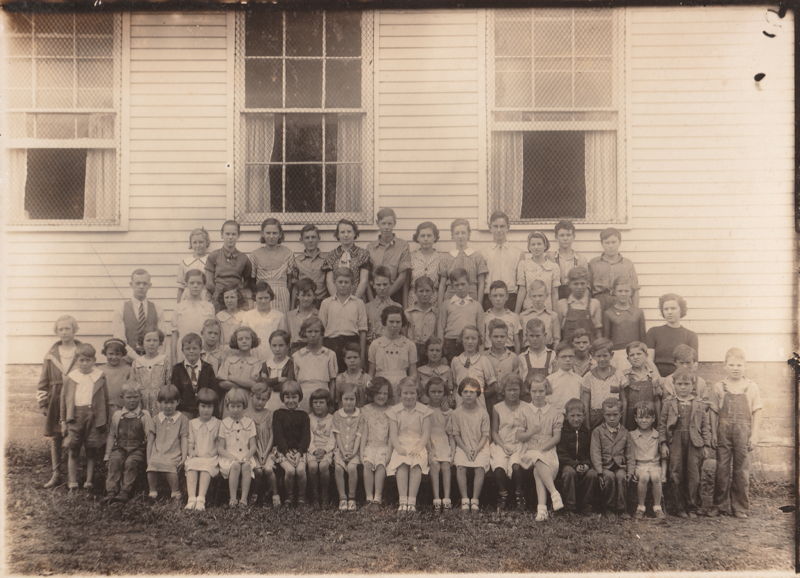
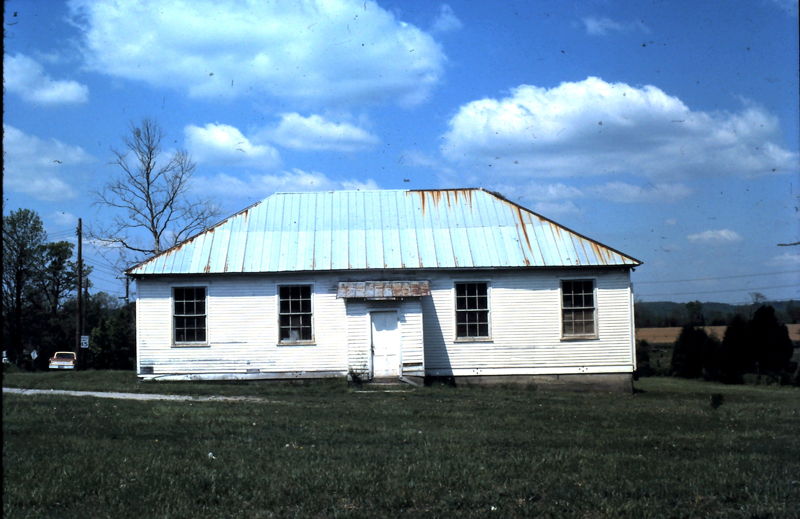
In 1972, Hebron Junior High School (later to become Hebron Middle School) was built just up the road. In 1984, the small city of Hebron Estates was incorporated out of a series of local subdivisions.
And so came "Hebron" in Bullitt County, a work of time.
Today, the historic old Hebron Presbyterian Church faces a modern challenge, and perhaps an opportunity. A new four-lane, limited-access Preston Highway has been built. This fine new road cuts closely across the back of the church, in effect making the classic front of the building look back at the old Preston, while the back looks to the new. Here's hoping that, after 158 years of service, the rapidly changing future will be kind to the revered old building and its people.
Whether it does or not, thanks to the church and its founders there will always be a "Hebron" in Bullitt County.
Copyright 2016 by David Strange, Shepherdsville KY. All rights are reserved. No part of the content of this page may be included in any format in any place without the written permission of the copyright holder.
The Bullitt County History Museum, a service of the Bullitt County Genealogical Society, is located in the county courthouse at 300 South Buckman Street (Highway 61) in Shepherdsville, Kentucky. The museum, along with its research room, is open 10 a.m. to 4 p.m. Monday through Friday. Saturday appointments are available by calling 502-921-0161 during our regular weekday hours. Admission is free. The museum, as part of the Bullitt County Genealogical Society, is a 501(c)3 tax exempt organization and is classified as a 509(a)2 public charity. Contributions and bequests are deductible under section 2055, 2106, or 2522 of the Internal Revenue Code. Page last modified: 12 Sep 2024 . Page URL: bullittcountyhistory.org/memories/hebron.html